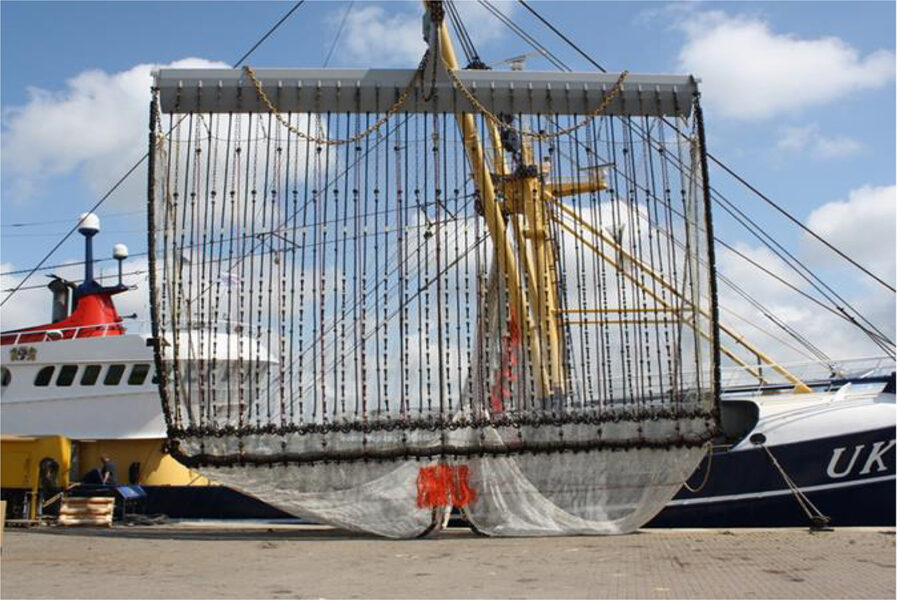Brussels appears set to legalise controversial electric pulse trawling, that Thames fishermen say is damaging sole stocks and the marine environment, reports Tim Oliver.
At a special meeting last week in the EU Parliament, a senior official from the Commission’s marine and fisheries department said pulse trawling was ‘the most innovative, most researched and most fuel-efficient gear’ and a crucial tool for dealing with the challenges of the landing obligation.
Electric pulse fishing is officially illegal in EU waters, but the Commission has granted exemptions to over 100, mainly Dutch, beam trawlers to use the method.
A report on the meeting by Low Impact Fishers of Europe (LIFE) said Elisa Roller, head of unit for CFP, and structural support, policy development and coordination in DG Mare, is sufficiently satisfied with the evidence from research to allow the pulse trawling technique to become a mainstream fishing method in EU waters.
She told the meeting that pulse trawling is ‘the most innovative, most researched and most fuel-efficient gear’ and a vital tool for dealing with the landing obligation because of the capacity to reduce discards.
She said there were still some outstanding issues to be resolved, though these were essentially due to a misunderstanding on pulse issues.
The meeting, organised by the Intergroup for Biodiversity & Ecosystems Services, was held on 21 June in the European Parliament and attended by MEPs, scientists, the Commission, industry representatives and NGOs.
LIFE says pulse beam gear is more than 10 times lighter than a conventional beam trawl (240kg vs 3,000kg) and has huge benefits for fuel economy, carbon footprint and seabed impact. But it says the lighter weight of the gear means that it can be used in areas inaccessible to beam trawls, and there has not been enough research into its effects on the marine eco-system.
The MSC last year rejected a bid for MSC-certification by the pulse fishery, saying more research was needed on its overall effects. LIFE is calling for caution before the gear is fully legalised.
LIFE director Jerry Percy said it was easy to see why the Commission was keen on the gear being used instead of conventional beam trawls because of its light weight and fuel efficiency, but they were not taking into account the deeper implications of the gear.
“It’s frustrating because everybody, including the European Parliament, is keen on pulse fishing instead of conventional beam trawling. You can understand in a simplistic way why that would be, but they haven’t done the research,” he told Fishing News.
“They’re not thinking about the deeper implications of this. We have had a lot of reports from fishermen in the South East who are catching damaged fish with broken backs and burn marks.
“They also complain that the southern North Sea sole come into the soft ground off the Thames to spawn. You couldn’t get on the soft ground with the conventional beam trawls but these boys can with the lighter pulse gear.
“It’s particularly efficient with sole, and they argue that their catches are within the quota – but the quota is being taken from a spawning stock in a very small area and the South East men say they’ve screwed it.”
Jerry Percy attended a demonstration in Holland last year, where it was claimed that reducing the voltage on the gear reduced its impact on the marine environment, but he said this was ‘too simplistic’, because there were many variables involved.
There was also the ethical dimension to consider, and he pointed out that electric fishing is still officially illegal and that pulse vessels are fishing with a dispensation.
“The original dispensation was for 5% of a beam trawl fleet for research purposes. Then Article 14 of the CFP allowed people to undertake research in support of greater selectivity and to cut discards, and this gear does cut plaice discards – it’s not as efficient on plaice as it is on sole, so it’s ideal from that point of view.
“The last count I heard was that there are 112 of these trawlers fishing in the North Sea, including some of our flag ships, so the genie’s out of the bottle.”
LIFE says small-scale inshore fishermen using fixed gears are also concerned that electric beaming is allowing beamers to move into more sensitive and environmentally fragile areas, and threatening their fisheries.
“Allowing the encroachment of electric pulse trawling into these inshore areas in the absence of any effective regulatory and control framework flies in the face of any precautionary or ecosystems-based approach to fisheries management,” says LIFE.
At the Brussels meeting, Hans Polet from the Flemish Agriculture and Fisheries Research Institute (ILVO) highlighted that despite research, there are still significant knowledge gaps as regards the wider ecosystem and longer-term impacts of pulse beaming.
Bjorn Stockhausen of Seas at Risk called for stronger licensing conditions and pointed out that the repetitive and cumulative effects of electricity over time were unknown.
Dutch industry representative Pim Visser called for an increase in the number of licences for brown shrimp vessels, highlighting that it would result in a 60 to 70% reduction in by-catch.
Read more ffrom Fishing News here.








